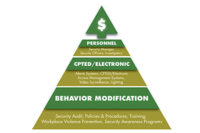Thirty percent of all business failures are due to theft and fraud by employees, and it has been estimated 60 percent of employee fraud and theft is committed by managers, owners, and senior executives. When a candidate cycles through the hiring and onboarding processes, and is later discovered to have lied about his or her qualifications, it not only disrupts the business, but can cost up to 50 percent of the given position’s annual salary to rehire.
Also it has been estimated that businesses in the U.S. lose more than five percent of their revenue each year to employee fraud and theft. Properly vetting prospective employees to defend against this represents a significant challenge for private firms and the government alike.
The benefits of making the right hiring decision are critical to the success of virtually every organization. Getting it right isn’t always easy, and getting it wrong can have significant consequences. Conducting comprehensive background checks for prospective employees using available technology has its beginnings within the national security agencies of the federal government and the U.S. military. However many private companies are now taking a similar approach to protect against fraud and to ensure greater workplace safety.
Until just a few years ago, the United States Army and the other armed services relied exclusively on ink and paper fingerprints that would have to be sent via the U.S. Postal Service to the appropriate authorities to conduct background checks for its recruits, processing through the Military Entrance Process Stations (MEPS). With the advent of biometric technologies, this was proven be both enormously costly and inefficient. In many cases, recruits would apply to enlist and the Army would spend months of administrative bandwidth processing a recruit only to discover that the he or she was not suitable for induction into the military due to a criminal record that was not disclosed.
To its credit, the Army recently instituted its Early Background Check Program that uses biometric enrollment technology to screen recruits rapidly to ensure they are fit for service and that they are who they claim to be at the time of enlistment. This allows recruiters nearly all Army recruiting locations to conduct the verification process early to ensure their efforts are focused on qualified candidates while creating significant savings for the taxpayer.
Using biometric enrollment technologies to facilitate rapid, highly accurate background checks is no longer limited to the government. Many leading private companies are turning to these capabilities to conduct their own pre-employment screening evaluations. In so doing, employers have found that using pre-employment livescan background screening can be instrumental in making an informed and truly objective decision based on the relevant applicant history.
As the hiring process becomes more global, so do the challenges in effectuating accurate background checks. State-of-the-art livescan background screening can effectively address the fundamental concern of the employer to determine that the applicant is who they claim to be and the information they provide in many key areas is truthful. For companies that have embarked on biometric screening of prospective employees, many have found that using higher-end technologies provides greater value long-term due to the speed and reliability these devices provide in capturing a high quality prints. By using higher resolution records, many have found that the biometrics provided to the FBI are accepted and processed quickly. Using lower resolution records can present the risk of rejection due to poor image quality. When this occurs, companies must start the process over to reacquire the print from the applicant – which can be logistically inconvenient and costly. Like so many things in business, making the needed investment to secure the right tools to do the job correctly the first time can afford big savings in the long run.
Biometric pre-employment screening is not a panacea that can universally prevent fraud or violence in the workplace. However, it can play an important role in addressing this growing problem by verifying criminal history and a number of important biographical elements in an application, such as social security numbers, age and residency. Moreover, many employers now understand that the screening process should not apply only to applicants but also to employees after they are hired. By conducting periodic screenings of employees, employers can help to ensure that workers remain fit for duty throughout their time in the workforce and maintain a more secure and productive and workplace.



